Key Activities – Building Block in Business Model Canvas
Published: 19 July, 2023
Business Models

Table of Contents
Introduction to Key Activities “Value Chain” in the Business Model Canvas
It can sometimes be challenging to discuss important business concepts, even when you’re an expert like the folks we have at Digital Leadership. A lot of terms are thrown around without a lot of definition or description.
Key Activities is a term that’s often used interchangeably with core activities, and these ties directly into your business’s value chain and value propositions: in other words, how you bring value to your customers, address their Jobs to be Done and solve customer problems uniquely. They are the essential tasks needed to deliver value to customers.

In “How to Create Innovation,” we discuss how the business model canvas can help you best understand your business model and the typical key activities that your business needs to perfect in order to succeed. Your key activities are the integral pieces of your business’s value chain and value propositions. They form a building block within several pieces of your Business Model Canvas, in particular your Operating Model Canvas.
In this article, we discuss how key activities define your business model, how they assist in value creation, and how to separate key activities from non-core activities that may be distracting you from success.
Key Activities Building Block of the Business Model Canvas
The original concept of core activities, supporting activities and Value Chain came from Michael E. Porter. In his groundbreaking book Competitive Advantage, Porter explores the underpinnings of competitive advantage in the individual firm. Competitive Advantage introduces a whole new way of understanding what a firm does. Porter’s concept of the Value Chain disaggregates a company into “activities,” or the discrete functions or processes that represent the elemental building blocks of competitive advantage.
Unlock the full potential of your business with The Unite Extended Business Model Canvas – an innovative framework that goes beyond the traditional canvas to encompass the immediate business context. By integrating crucial elements such as Business Drivers, customers, and the team, along with the Unfair Advantage, this extended model provides a comprehensive and strategic approach to mapping your business. Download the model now to gain valuable insights, align your resources effectively, and discover a winning formula for sustained success in today’s competitive business environment. You can download it now.
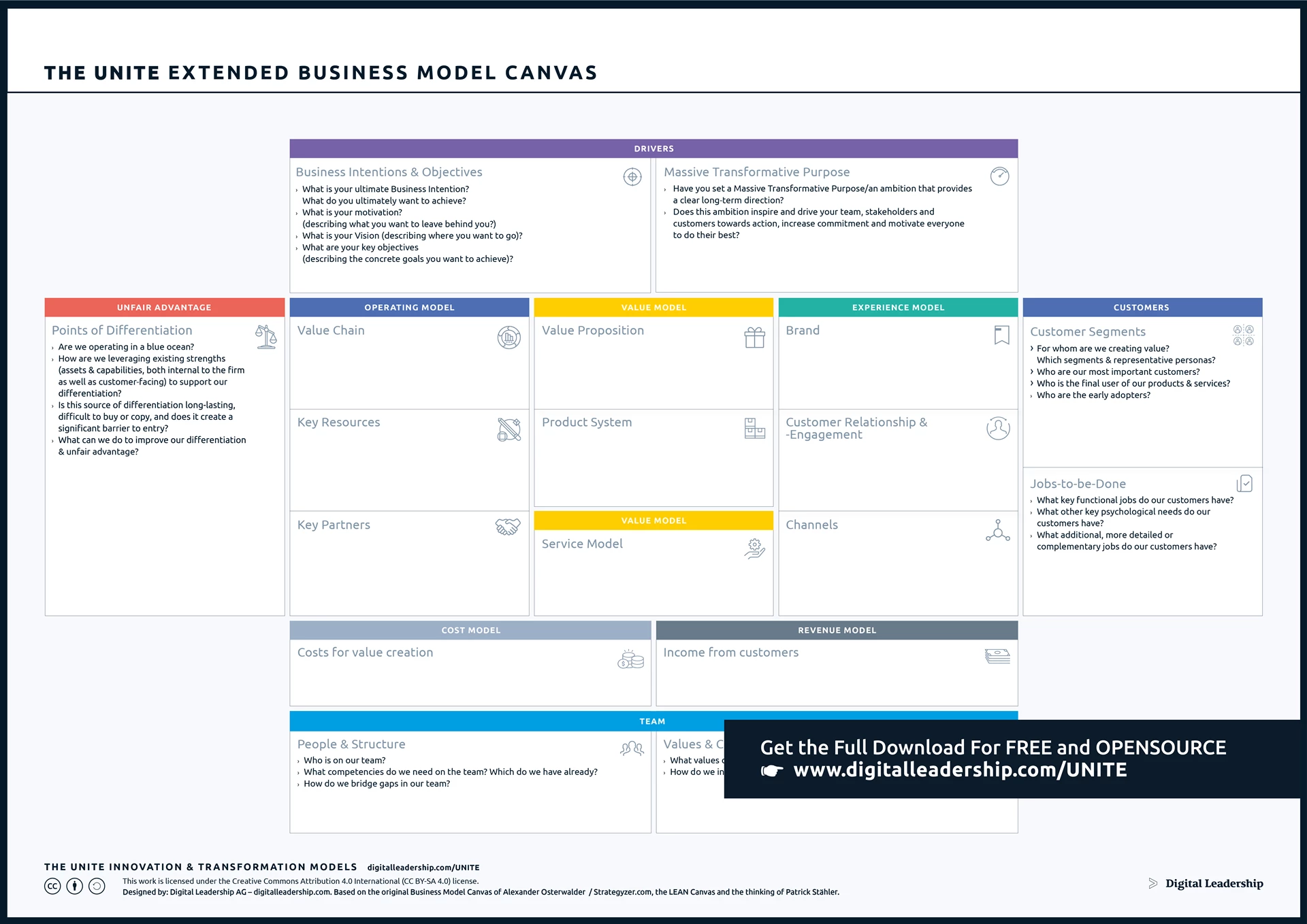
Designed by: Digital Leadership AG – Building on the work of Alexander Osterwalder, the Lean Canvas and the thinking of Patrick Stahler
The concept of Value Chains as decision support tools was added to the competitive strategies paradigm developed by Porter as early as 1979. In Porter’s Value Chains, Inbound Logistics, Operations, Outbound Logistics, Marketing and Sales, and Service are categorized as primary activities. Secondary activities include Procurement, Human Resource Management, Technological Development, and Infrastructure.
Business models take core and key activities into account and use them to support their revenue streams.
What are Key Activities & Why are They Important?
Most of your organization is made up of non-core activities: entire areas such as accounting, forecasting, marketing, and HR, are not even sector-specific and so generally do not add to the differentiation of your organization. In these areas, you can increase efficiency or decrease costs, but further investment in these areas is unlikely to add to your competitive advantage.
Your key activities are industry-specific and are areas where you possess relative strength. However, here you are competing head-to-head with other firms and are not superior to them.
When we are looking for strengths that support innovation, we need to be looking for assets and capabilities that are core or, ideally, differentiating, since these will support your competitive advantage. Key activities are your business’s reason to be, and differentiating how you do them will make you stand out in the crowd of competitors.
The distinction between core and non-core is critical, and yet most firms do not bother to make it. But it is precisely that distinction that allows you to understand where to cut cost and where to invest, where to focus on differentiation, and where to standardize, a key resource from something far less important.
Key Activities, as a building block of the Value Chain in the Business Model, hold significant importance in driving business success. They represent the core operational tasks and processes that a business must undertake to deliver value to its customers.
At Digital Leadership, our Business Model Strategy service provides expert guidance and assistance in aligning Key Activities with the overall objectives and value proposition of the business. Additionally, our Marketing Strategy Consulting service is essential for optimizing Key Activities within a business. It provides specialized expertise and insights that aid in aligning marketing activities with the broader business strategy, ensuring strategic alignment and maximizing the impact of Key Activities.
Which Key Activities are Critical to your Value Proposition?
Discovering your key activities begins with a thorough examination of your value proposition. Here are some essential questions to consider when identifying the most crucial actions in your business:
- Building your product or service:
- What are the primary actions required to design and develop your product or service effectively?
- Which processes or tasks play the most significant role in ensuring the quality and uniqueness of your offering?
- Distributing your product and service:
- What key activities are involved in the distribution and delivery of your product or service to customers?
- Are there specific logistics, transportation, or fulfilment activities that are critical for reaching your target market efficiently?
- Maintaining customer relationships:
- What activities are essential for providing personalized service and support to your customers?
- How do you engage with customers to enhance their experience and foster loyalty?
- Revenue stream fundamentals:
- What actions are indispensable for generating revenue and ensuring a steady income flow?
- Which activities are crucial in building trust and credibility with customers to facilitate sales and repeat business?
In the Unite Value Proposition Canvas, the process of discovering key activities in your business begins with a thorough examination of your value proposition. By carefully evaluating the primary actions required to design, develop, and deliver your product or service effectively, you can ensure the quality and uniqueness of your offering.
The Unite Value Proposition Canvas help you gain a structured framework that helps prioritize tasks, streamline operations, and enhance customer satisfaction. And enable your business to thrive, delivering value to customers while driving revenue and growth in a competitive market landscape, You can download it now.
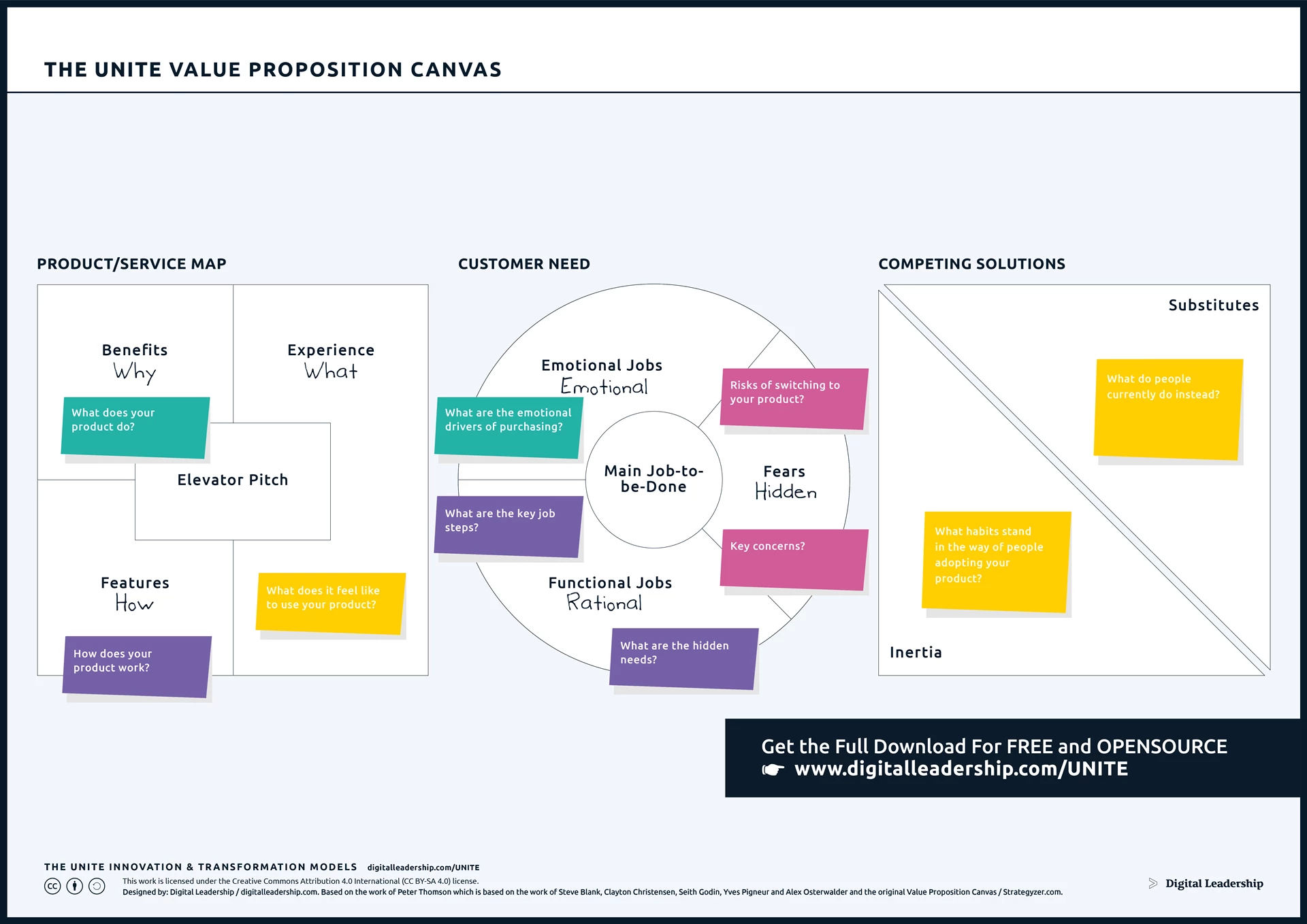
Designed by: Digital Leadership AG – Based on the work of Peter Thomson which is based on the work of Steve Blank, Clayton Christensen, Seith Godin, Yves Pigneur, and Alex Osterwalder, and the original Value Proposition Canvas
There are a few different ways to identify and assess your strengths and the key activities necessary to your value proposition; here are three that have worked for us.
1- Brainstorm and interview
The simplest way is to brainstorm and build on the ideas you generate through a series of interviews with the senior business executives in your core organization. This approach will uncover some of your greatest strengths quickly. However, based on our experience, it will often not go far enough, since many firms are simply not used to reflecting on their assets and capabilities, and so asking people what they think their differentiating strengths are may not yield a full and accurate picture.
Additionally, market research will help you understand the needs of your various customer segments. You’ll better understand how your value propositions are helping customers complete their Jobs-to-be-Done.
2- Work with a Capability Map
If you want to take a more systematic approach, our best advice is to work with a Capability Map.
Capabilities are the processes, systems of knowledge, and specific skills that a firm possesses based on which it operates, earns revenue, and competes with other firms. Capability Maps summarize the capabilities of a firm visually. They can exist at different levels of an organization – from an abstract list of capabilities at the enterprise level, or a much more detailed visualization when focusing on the particular capabilities of organizational units or even something like the IT system.
The Unite Business Capability Map offers a systematic approach to understanding a firm’s processes, knowledge systems, and skills. It provides a comprehensive visual summary of capabilities, enabling clear communication, strategic planning, and efficiency improvements. By downloading the model, businesses can customize their Capability Maps, align resources, and drive sustainable growth. You can download it now.
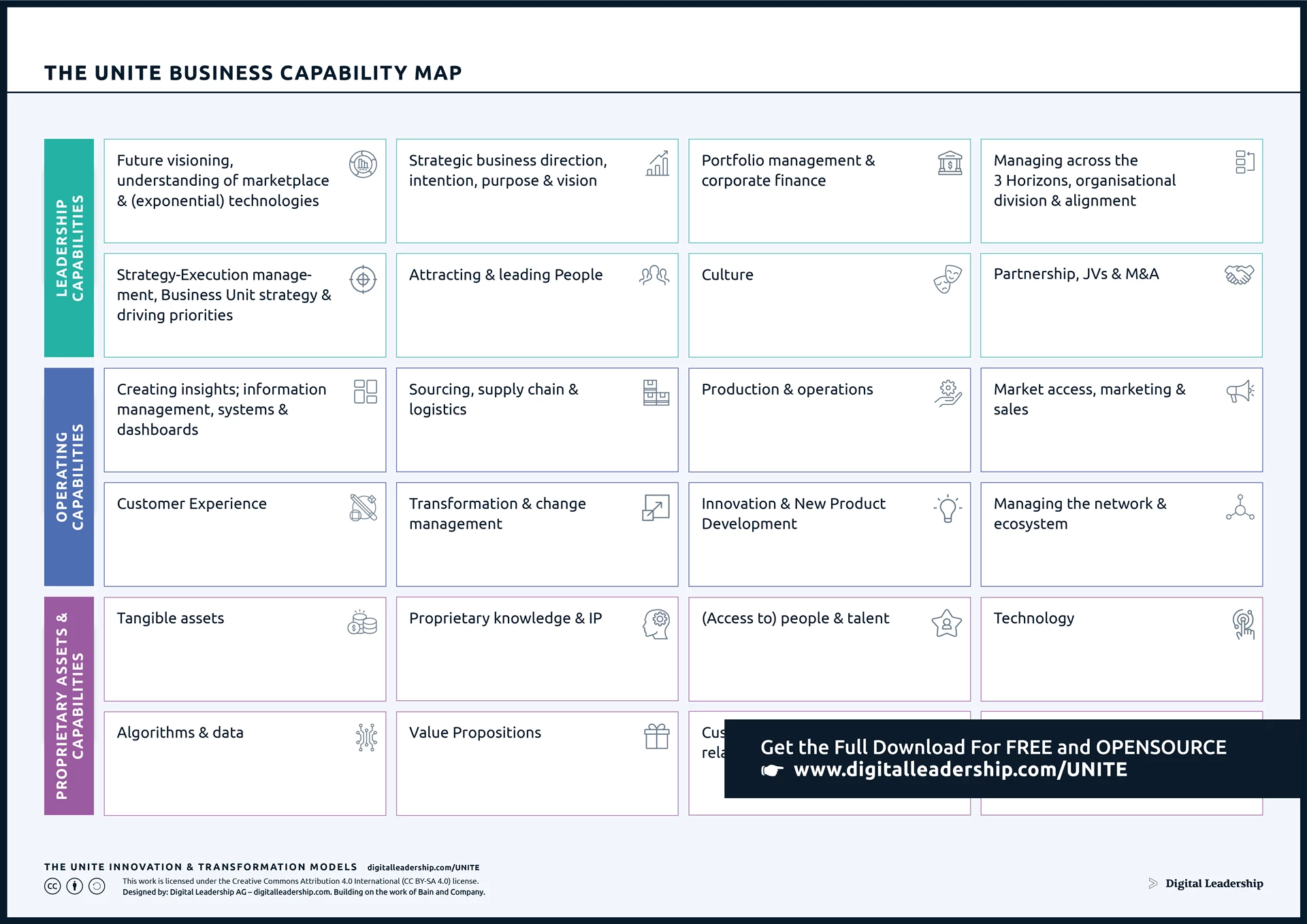
Designed by: Digital Leadership AG – Building on the Work of Bain & Company
Capabilities are the processes, systems of knowledge, and specific skills that a firm possesses based on which it operates, earns revenue, and competes with other firms. Capability Maps summarize the capabilities of a firm visually. They can exist at different levels of an organization – from an abstract list of capabilities at the enterprise level, or a much more detailed visualization when focusing on the particular capabilities of organizational units or even something like the IT system.
3- Work with an Operating Model
A third alternative is to mine your Operating Model for strengths that distinguish you from your competitors. The concept of an Operating Model Canvas was originally developed by Andrew Campbell and his colleagues. We have developed an iteration of it that will consider additional aspects and that is more geared towards innovation.
One key ingredient we propose to overcome the Strategy-Execution challenge is to establish how you are going to execute using a well-defined and communicated Operating Model. The Operating Model Canvas expands upon the Value Chain, Key Resources, and Key Partners of your Business Model.
The Unite Operating Model Canvas will help your team achieve alignment with your strategy and with each other, thus bringing together all the different functions of your business. You can download it now.
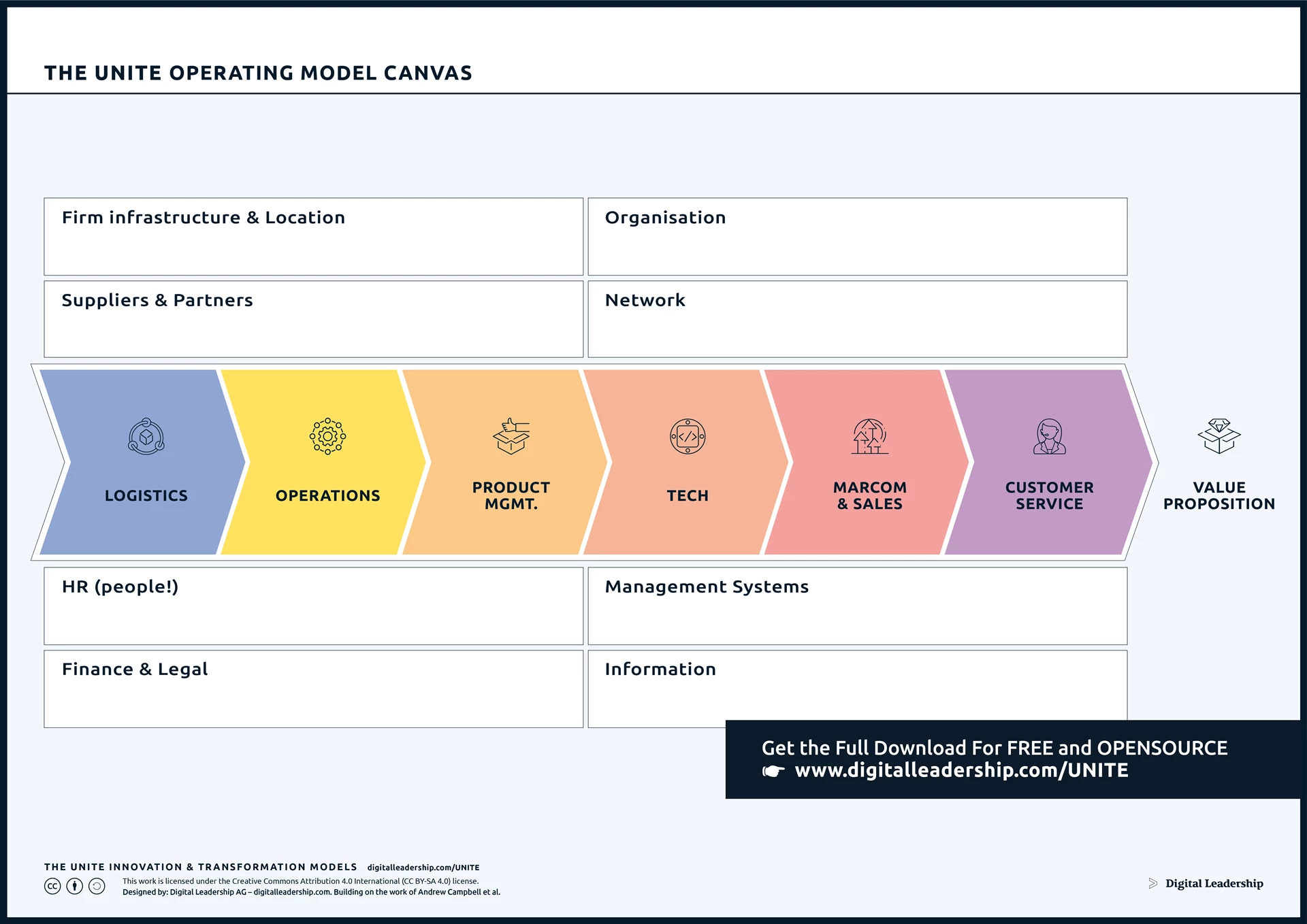
Designed by: Digital Leadership AG – Building on the Work of Andrew Campbell at al
An interesting exercise is to assess from a third-party perspective what you are offering and how you are creating value today. How is your organization operating and does that hold more radical potential? Can your Value Chain be entirely rethought and reconfigured? Can you disintermediate the Value Chain, cut out entire production processes, or develop a new Value Proposition if you leave out some steps?
This means undertaking a clear and objective analysis of the situation and thinking through the Value Proposition and Value Chain, and the disruption potential in each step.
Assessing your assets and capabilities is critical. These will provide the boundaries for any future innovation and transformation initiative. If you do not leverage your unique assets and capabilities, you are likely to end up in competition with quite literally everybody – a fight that is hard to win. By leveraging your strengths, you can outline a unique Search Field and Opportunity Space for your innovations.
Key Activities Categories
Your key activities must be robust and diverse enough to provide consistent revenue streams to move your value propositions forward. Your key resources are the materials and contacts you’ll need in order to successfully complete those key activities.
Your entire Value Chain and all of your supporting processes must be able to effectively support your key activities. The chain always breaks at its weakest link. Therefore, think hard about what you need to do to get ready to scale effectively and focus on the most important and most difficult areas first.
1- Production
The processes behind actually making your product.
Production processes are a critically important key activity, and you should have clear quality and cost control over them, particularly if you are a production-driven business. Inventory control is an important element of production, as well. Make sure you’ve empowered production managers to
Many of your key resources will be devoted to production because the production process is so materials-heavy, but don’t neglect the relationships that may be key resources, too,
2- Problem-solving
All businesses, no matter their business model, must approach problem-solving as a key activity.
Problem-solving pathways are established so decision-making is as streamlined as possible. Proper problem-solving is an important element of maintaining customer relationships. Entire business models are devoted to the customer relationship that grows as a result of completing the problems of a customer’s Jobs to be Done.
3- Platform/ Network
Modern companies must ensure that their digital footprint is robust and persistent, and if your business is the technology you’re using, then ensuring that it’s operating is clearly an important key activity.
Your platform management and network-related key activities are too important to ignore; make sure they receive the attention and investment they deserve. Knowledge management is likely extremely important for businesses that exist completely online.
Common Key Activities
It can be easier to understand the concept of key activities with some examples.
Obviously, your specific key activities will depend on your business and value proposition.
1- Research & Development
Your research and development department should be laser-focused on innovation. That can only happen when you’re not wasting resources on non-key activities. Those resources should be devoted to new customer segments and business development.
In addition to new products, resources should be devoted to developing new distribution channels.
2- Production
Production planning is an important key activity and an important site of cost and quality control. The right QC management results in continuous learning and improvement of the production process. The right inventory management system will make sure you can meet the expected demand.
3- Marketing
The business model canvas includes room for marketing because seeking out new customers is a key activity within nearly every business model.
4- Sales, Customer Services, & Customer Relationships
Your sales support and sales team are important elements of your business model and should be treated as one of your key activities. The focus should always be on key or prospective customers, the so-called “hero” customers that can make or break your revenue streams.
Because it’s so important to maintain customer relationships and the customer experience, customer interactions appear as key activities in multiple areas of the business model canvas.
Key Activities for Some Real-Life Examples
- Google:
– Key Activities: Continuously improving the code base and analyzing data to enhance search results and optimize advertising performance. - IKEA:
– Key Activities: Optimizing the logistics chain to stock all furniture items in stores as per market demands. Working on cost reduction for flat-packed, self-assembled furniture. - Dairy Farm:
– Key Activities: Feeding and checking the health of cows, milking them, and storing milk for collection. - Nestle (Yogurt Product Line):
– Key Activities: Collecting milk, processing it into yoghurt, packaging the yoghurt into containers, and distributing it through the supply chain. - SpaceX:
– Key Activities: Designing and manufacturing larger rockets, developing advanced rocket control and telemetry systems, and offering orbital delivery services. - Tesla:
– Key Activities: Manufacturing electric vehicles with innovative technology and developing sustainable energy solutions. - Apple:
– Key Activities: Designing and developing cutting-edge consumer electronics, creating software ecosystems, and marketing premium products.
Key Points About Identifying Key Activities in Your Business Model:
- Capability Map Approach: Use a Capability Map for a systematic analysis of critical processes, knowledge systems, and skills that drive your business’s operations, revenue generation, and competitiveness.
- Production-Based Businesses: For manufacturing or production-focused companies, key activities involve sourcing raw materials, transforming them, and efficient distribution.
- Problem-Solving Businesses: Knowledge-intensive businesses prioritize activities like client consultations and case law reviews, leveraging innovative processes for a competitive advantage.
- Platform-Centric Businesses: Companies providing platforms or networks focus on building and continuously optimizing their offerings to serve multiple customer segments effectively.
- Startup Prioritization: Startups should prioritize a few key activities to excel in critical areas, establish competitive advantages, and optimize resource allocation.
- Importance of Focus: A limited number of key activities demonstrate clarity in thinking and prioritization, allowing businesses to excel and defend against potential threats.
- Explore Practical Case Studies: For in-depth insights into successful key activity prioritization, visit relevant websites analyzing how diverse businesses manage core activities for sustainable growth and market leadership.
Key Activities: Questions for Reflection
As we wrap up this discussion of key activities, we’d like to suggest some questions for you and your team to consider. Not only will your answers reveal how successfully you’re following through on the key activities of your business model, but not having answers will tell you a lot, as well.
- What are our value chains and key processes?
- What are our key value-creating activities?
- Do we have several key value chains?
- What are our value chains and key processes?
- What are our key value-creating activities?
- Do we have several key value chains?
Connecting The Dots: The UNITE Business Model Framework
The key activities play a crucial role in each element of The UNITE Business Model Framework, and they are the specific actions required to bring the business model to life.
How to Create Innovation includes a number of canvases that focus on value creation and finding the right business model to meet your customer segment and customer needs. The framework is built to inspire drastic changes that help you find a competitive advantage. Our hope is that your company grows through business model innovation, and so we again encourage you to look deeper into our website and the book.
Here is a summary of the key ingredients of the framework:

Designed By: Digital Leadership AG
Business Models
The centrepiece is the Business Model Canvas, which covers the six main areas of a Business Model (the Operating, Value, Service, Experience, Cost, and Revenue Models).
The eXtended Business Model Canvas adds the immediate business context, including Business Drivers, customers, and the team, as well as the Unfair Advantage.
Detailed Models
A Business Model can be broken out into numerous aspects. Depending on what challenges you face, you can zoom in on your area of interest using an appropriate tool or canvas:
- Your Business Intention and objectives as well as your Massive Transformative Purpose summarize your drivers and give direction to what you do.
- The Value Proposition Canvas details the central components of your offering (the product or service).
- To dig into your Customer Segments, work with data-driven Personas.
- The JTBD Customer Job Statement and Job Map frame the JTBD of your customers.
- The Business Model Environment puts your Business Model in a market context composed of emerging trends and disruptive forces.
- The Innovation Culture Canvas helps you understand and consciously shape a culture that supports innovation.
- The Innovation team structure enables you to draft a team structure for your innovation initiative.
- Using learning and growth metrics, you can measure progress at the initial stages of development. These metrics help you focus on what really matters instead of creating a detailed business plan that will not really help you. Later on, you can expand the financial aspect of the Revenue and Cost Models with a full business case.
- The Operating Model Canvas helps you think through the Operating Model.
Conclusion
Optimizing Key Activities is crucial for enhancing a business’s efficiency, effectiveness, and overall performance. By identifying areas of improvement within the value chain, businesses can streamline processes, reduce costs, and deliver better value to customers. Optimization may involve adopting new technologies, refining workflows, investing in employee training, and leveraging data analytics to make informed decisions. By continuously optimizing Key Activities, businesses can stay competitive, drive innovation, and achieve long-term success.
Frequently Asked Questions
1- How do you identify key activities?
Optimizing key activities in a business is crucial for improving search engine visibility and attracting more potential customers. By identifying and focusing on the core operational tasks and processes that contribute to the value proposition, businesses can enhance their competitive advantage and better align with the needs of their target audience. Implementing effective SEO strategies and content marketing efforts around these key activities can lead to higher rankings on search engine results pages, increased organic traffic, and improved online visibility, ultimately driving business success and growth.
2- What is an example of a key activity in business?
In the realm of business, one prime example of a key activity is “Research & Development” (R&D). For companies aiming to drive innovation, R&D holds immense significance as it becomes the driving force behind new product or service development, the enhancement of existing offerings, and the ultimate differentiation from competitors. Within this process, the generation of ideas, conducting experiments, and constant refinement all directly contribute to delivering unmatched value to customers, making R&D an indispensable element of business success.
3- What are 3 examples of business activities?
Three examples of essential business activities are as follows:
Sales: This involves the process of effectively selling products or services to customers, generating revenue for the company.
Marketing: This encompasses a range of activities aimed at promoting and advertising products or services to attract and engage potential customers.
Accounting: This critical function involves managing financial transactions, maintaining accurate bookkeeping records, and preparing financial statements to ensure the company’s financial health and compliance.
4- What are the 6 basic business activities?
a. Sales and Marketing
b. Research and Development
c. Production or Service Delivery
d. Procurement
e. Human Resources
f. Finance and Accounting
5- What are the 5 management activities?
In the realm of management, there are five fundamental activities:
a. Planning: involves establishing objectives and devising the optimal strategy to attain them.
b. Organizing: The allocation of resources and structuring of tasks to effectively reach organizational goals.
c. Staffing: The process of recruiting, selecting, and training employees to occupy essential positions within the organization.
d. Directing: Providing guidance and leadership to employees, ensuring efficient task execution and goal achievement.
e. Controlling: Monitoring performance and taking corrective measures to ensure successful goal attainment.




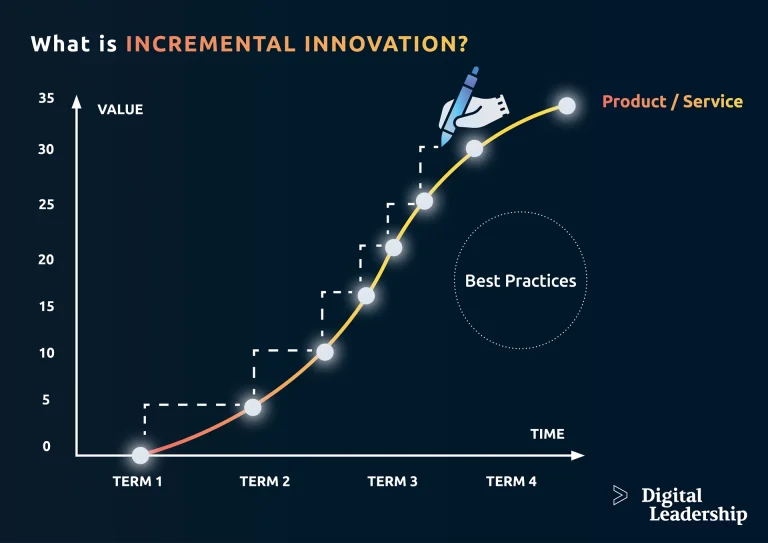





























 Book How to Create Innovation
Book How to Create Innovation